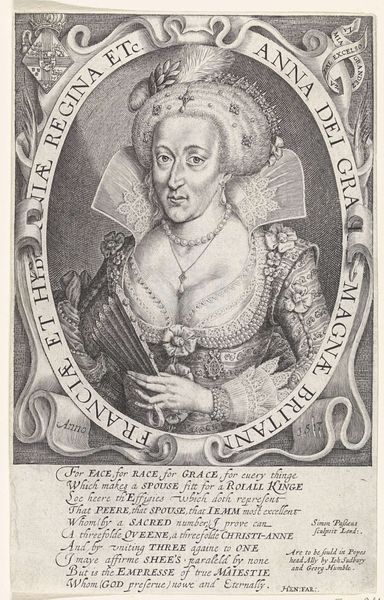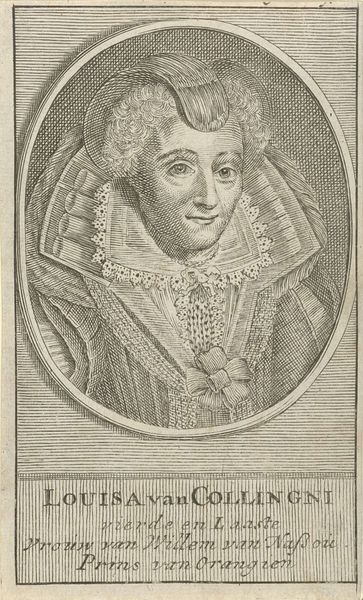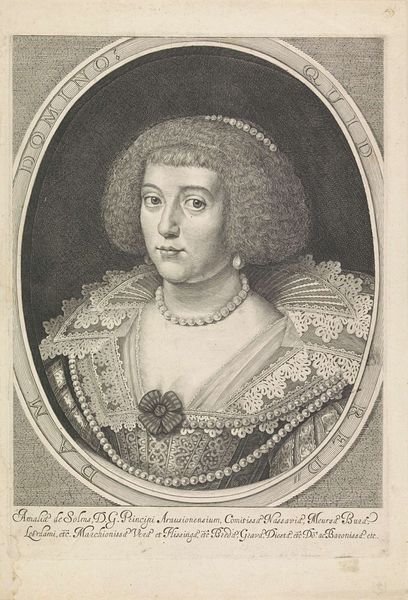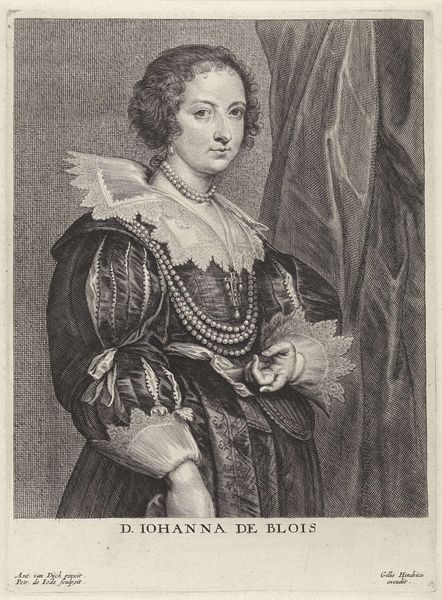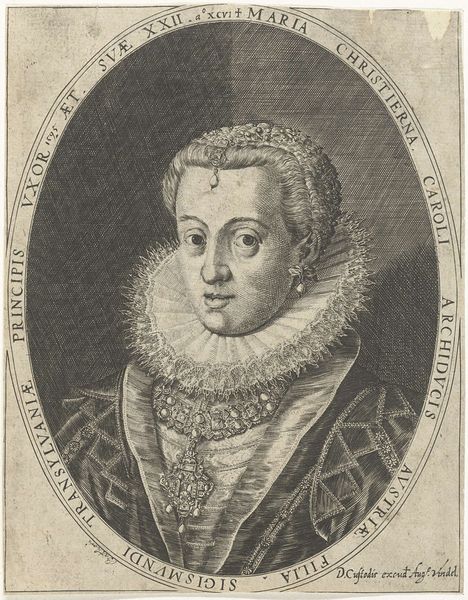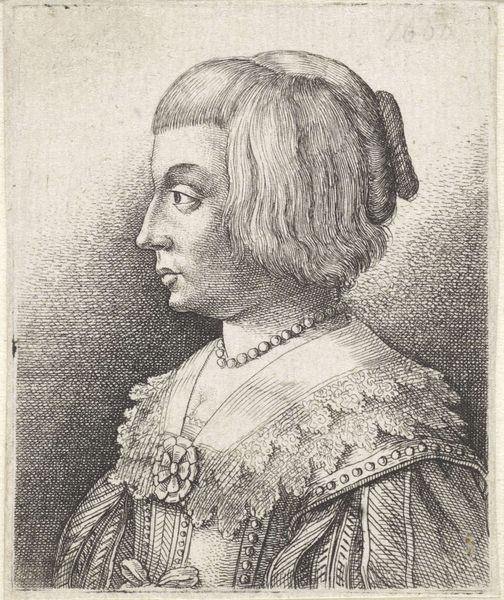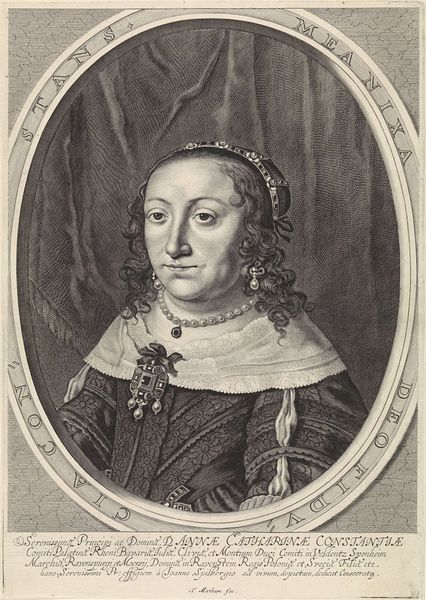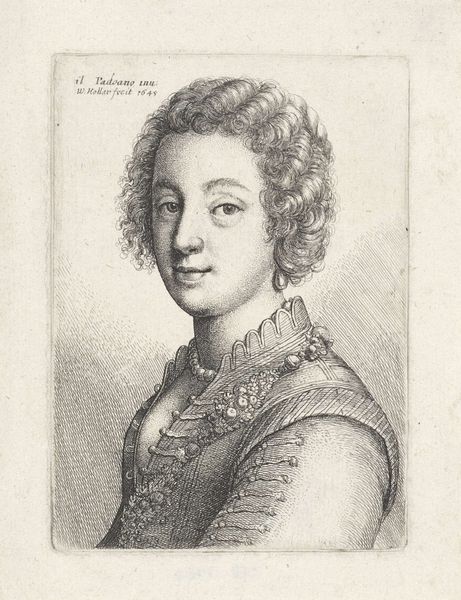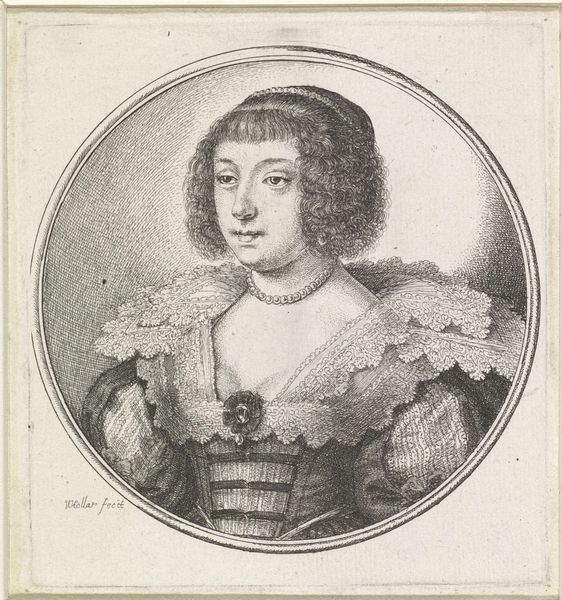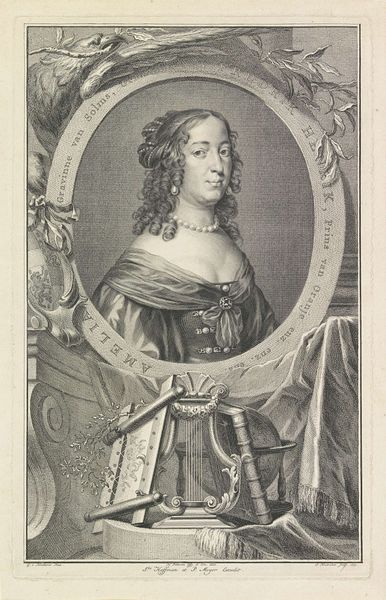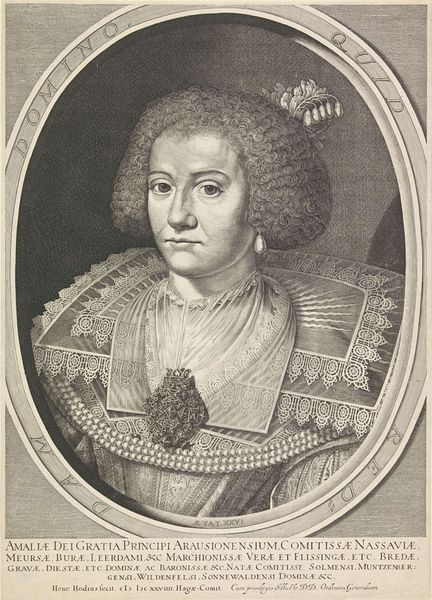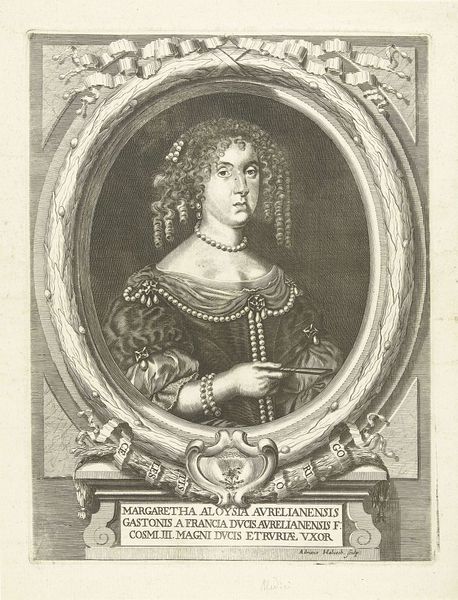
print, engraving
#
portrait
#
aged paper
#
baroque
# print
#
old engraving style
#
history-painting
#
golden font
#
word imagery
#
engraving
#
historical font
#
columned text
Dimensions: height 154 mm, width 99 mm
Copyright: Rijks Museum: Open Domain
Editor: So, this is Wenceslaus Hollar's "Portrait of Anna Francisca de Bruyns," created as an engraving in 1648. There's something almost severe about her gaze, a formality reinforced by the dense lettering. How do you interpret this work? Curator: What immediately strikes me is the socio-political statement embedded in this portrait. It isn't simply about individual likeness but about constructing and reinforcing status through visual representation. Consider the prominent display of her name and lineage – everything is geared towards highlighting her nobility and her marital connection to Isaac Bullart. How does the lettering surrounding the portrait influence your perception of her? Editor: It feels like framing, literally and figuratively. It boxes her into a specific identity. I wonder how much of this was her own intention. Curator: Precisely! We have to think about the power dynamics at play here. This wasn't a candid snapshot, but a carefully constructed image designed to project a particular image of female respectability and dynastic pride in the 17th century. Note her clothing and jewelry, the emphasis on intricate lace. These were potent symbols of wealth and social standing. Do you think this level of detailed representation allows space for her individuality? Editor: Maybe only subtly? I am now curious about her experience of being depicted and then disseminated to the world in such a formalized, almost rigid manner. Curator: Exactly. That tension between individual agency and societal expectation is what makes these portraits so compelling. We can unpack how the image becomes a site of negotiation between the subject's potential self-expression and the prevailing social norms. Hopefully you see now why it’s useful to view historical artwork through the lens of contemporary theory! Editor: Definitely. I’m leaving with so much more to think about than just aesthetics or technique.
Comments
No comments
Be the first to comment and join the conversation on the ultimate creative platform.
